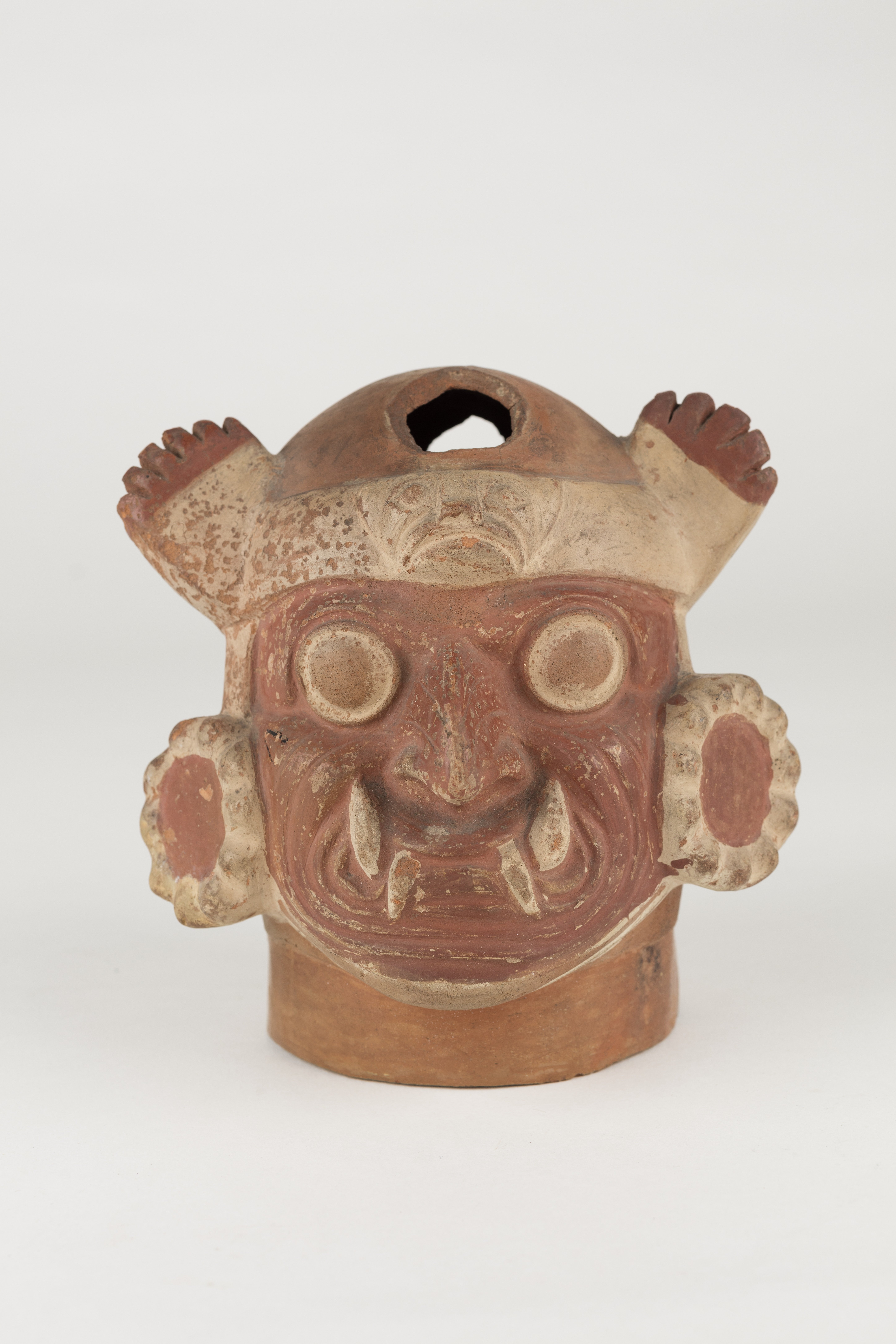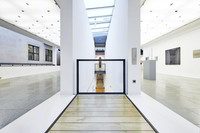Clay jar from Ancient Peru, Moche civilization (100 BC - 700 AD), in form of a head with red slip. The head is shaped grotesque with big eyes, pronounced wrinkled sections around mouth and the eyes. The mouth is grimaced and has fangs. It wears a headgear resp. a headband that shows in its middle probably the face of a (big) cat whose paws stick out of the head on both sides and whose tail dangles from the back of the head. Below the paws, a chinstrap begins; large pegs decorate the head's ears.
The depiction implies that it is the head of the so-called "Ai apaec / Aiapæc", the supreme deity of the Moche civilization (Maker God). This god was commonly depicted with a human-like face, jaguar fangs and partly with a jaguar head crown.
The jar probably came into the museum's collection in the late 19th century. Particulars on the conditions of the acquisition are not known.
The spout on the forehead is broken and missing; probably it was a stirrup formed spout that was fixed on both sides of the head. The so-called stirrup spout vessels were a common type of vessels in the Moche civilization.
de

